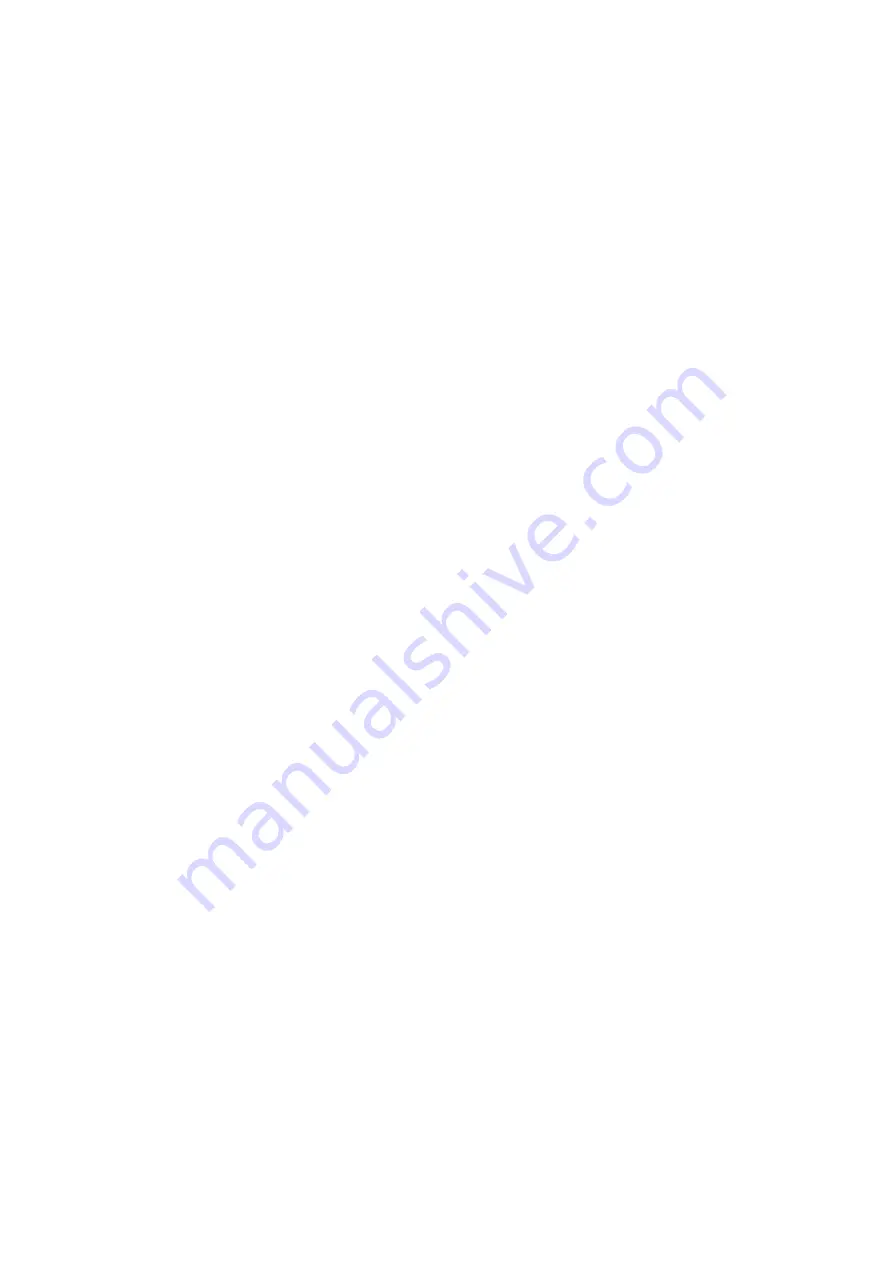
11 The suction or discharge lines are obstructed or clogged
locate the obstructed or clogged area and clean
14.2
The pump does not deliver liquid
12 The pump is not primed
see the points listed under 15.1
13 The head required by the system is greater than the rated head of the pump
revise the system design or re-select the pump
14 Excessive friction losses in the suction line
revise the distribution of elbows, valves, restrictions etc.; if necessary increase the diameter of the pipework
15 The impeller is clogged by foreign objects
disassemble the casing and remove the foreign objects
16 The suction or discharge lines are obstructed or clogged
locate the obstructed or clogged area and clean
14.3
The pump does not have sufficient capacity
17 Air leaks in the suction line
check that the couplings are airtight and inspect the suction line
18 The impeller and/or wear plate are worn
they should be replaced by disassembling the pump as described in paragraphs 14.2 and 14.3
19 The diameter of the suction line is too small
replace the suction line
Check the other possible causes in paragraph 15.2
14.4
The pump does not provide enough pressure
20 The viscosity of the liquid is higher than expected
contact the manufacturers after measuring the viscosity; for centrifugal pumps this should not exceed 50 cSt
Check other possible causes: see point 5 of paragraph 15.1 and paragraph 15.2
14.5
The pump absorbs too much power
21 The rotation speed is too high
check the correct rotation speed
22 The pump operates under conditions which are different for those specified
check the operating conditions of the pump and compare them to those on the pump name plate
23 The density of the liquid is higher than specified
measure the density (or specific gravity) of the liquid and compare it to the agreed figure
24 Incorrect alignment of the unit
check that the unit is correctly aligned as described in paragraph 11
25 Friction inside the pump between the rotating and non rotating components
remove the pump casing as described in paragraph 14.2 and check if there are signs of rubbing on the surfaces
26 Foreign bodies trapped in the impeller
remove the pump casing as described in paragraph 12.2 and remove the foreign bodies
14.6
The pump vibrates and is noisy
27 The pump is operating at too low a capacity
check the settings of the valves in the system and the readings on the pressure and vacuum gauges
28 The pump or the pipework are not well fixed
check that the pipework is correctly clamped
29 The pump cavitates
see paragraph 13.1.2
Check the possible causes in paragraph 13.1.1
30 Foreign bodies trapped in the impeller
remove the pump casing as described in paragraph 14.2 and remove the foreign bodies
14.7
The pump jams
31 Mechanical breakdown
check the shaft, flexible coupling, motor or engine, pulleys and belts, gear boxes etc. for breakages
32 Foreign bodies jammed inside the pump
remove the pump casing as described in paragraph 14.2 and remove the foreign bodies
14.8
The bearings have a short lifetime
33 Lack of lubrication
lubricate the bearings as described in paragraph 14.8
34 Foreign bodies in the bearings
change the bearings as described in paragraph 14.9
35 The bearings are rusted
change the bearings as described in paragraph 14.9
14.9
The mechanical seal leaks
36 TW type seal
this type of seal is suitable for pumping dirty liquids or liquids containing abrasive particles or petroleum products at temperatures up to
110°C; grease every 500 hours through the grease nipple until grease comes out behind the seal. If well lubricated, this seal can run dry
for 2 minutes. If the seal leaks during operation, it must be replaced (see paragraph 14.5)
37 T type seal
this seal does not require maintenance. If it leaks, replace it (see paragraph 14.5)
11































